 "TheVancen- In Pursuit of a Greater Payday and Car Parts" (the-vancen)
"TheVancen- In Pursuit of a Greater Payday and Car Parts" (the-vancen)
05/09/2015 at 21:55 ē Filed to: Capri, Ford, JPS
 13
13
 11
11
 "TheVancen- In Pursuit of a Greater Payday and Car Parts" (the-vancen)
"TheVancen- In Pursuit of a Greater Payday and Car Parts" (the-vancen)
05/09/2015 at 21:55 ē Filed to: Capri, Ford, JPS |  13 13
|  11 11 |
Repost for the evening crowd.
Unless youíve been privy to the pictures and poorly worded sentences Iíve dribbled all over every post that had even the slightest excuse for me to gush about a car Iíve never actually driven. Here is all the information Iíve absorbed over the years about this 1975 Ford Capri Mk II John Player Special. I was going to wait until the car was running to do this, but we are waiting on a thrust bearing to bolt the engine in the car.
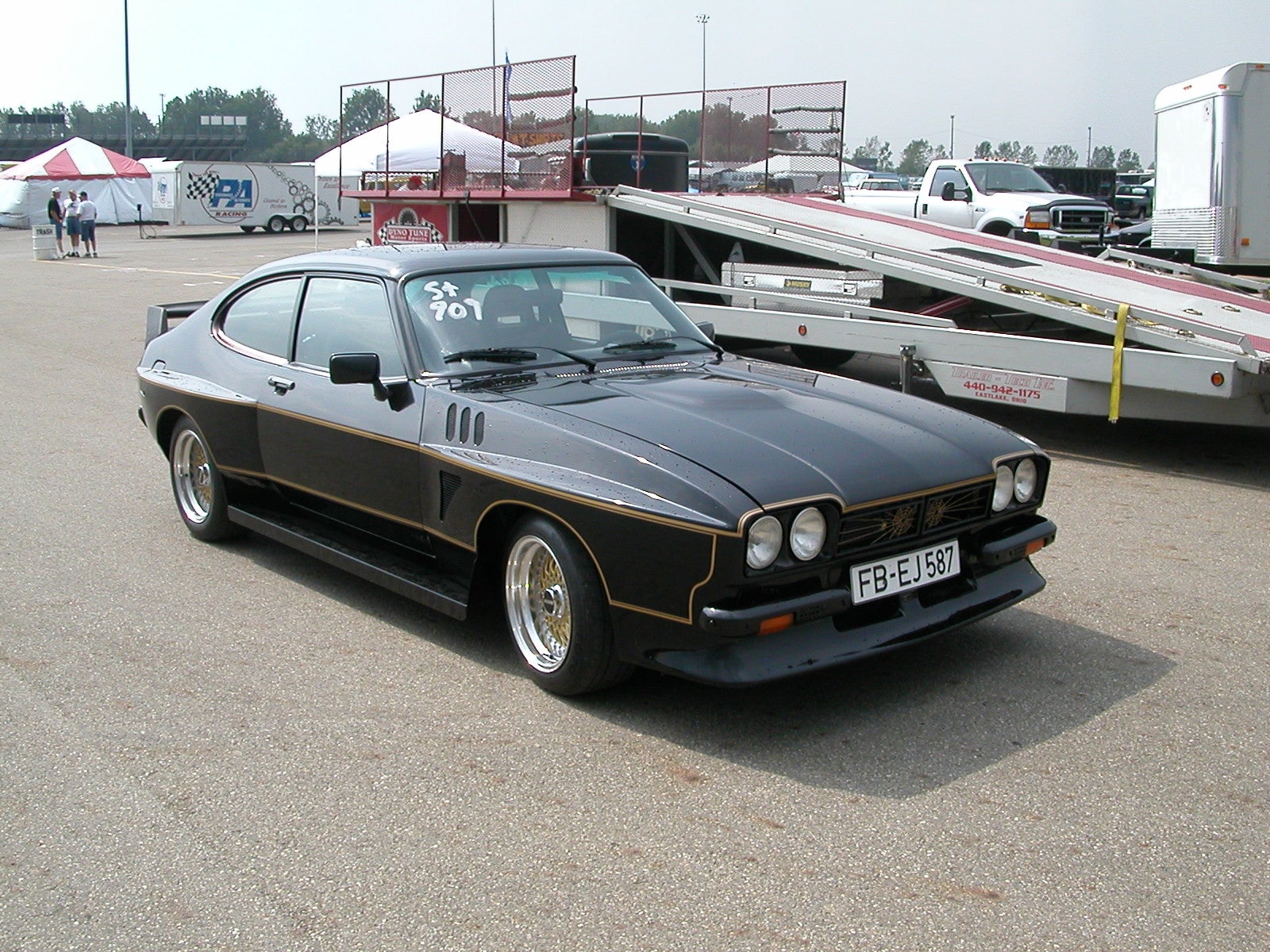
I suppose the beginning is as good as place as any to start.
Itís 1975 and Ford is all over factory racing in Europe, and Ford wanted to step on some toes in the Deutsche Rennsport Meisterschaft or DRM. The very same organization that later hosted the visceral Group 5 Zakspeed Capri. So Ford of Germany rounded up 50 factory stock JPS Capris, also know as Black Cats, and sent them to the now defunct racing shop by the name of Krabb Racing.
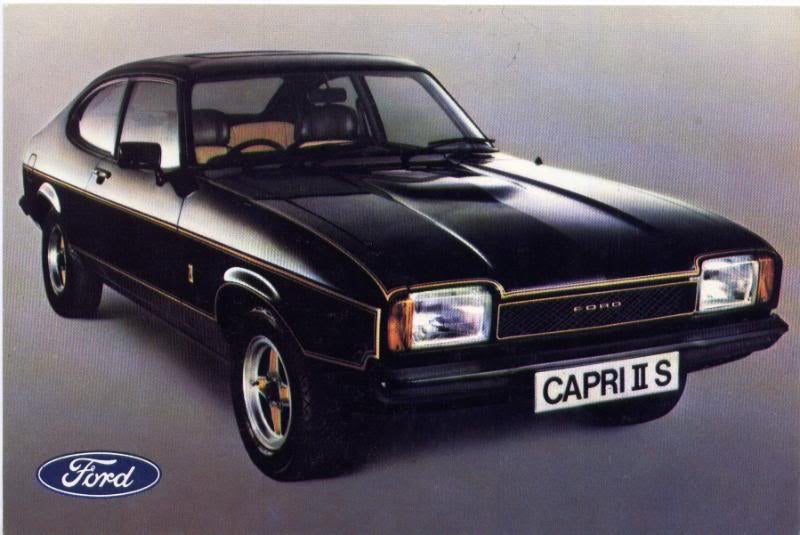
From there the story unfolds similar the original Shelby Mustangs, Krabb gets a Capri, and promptly throws most of it away. Most anything left is modified and not much else is left alone. Unfortunately there are hardly any pictures of these modified cars on the internet, most likely since they were over shadowed by the earlier factory effort, the RS2600 and the later Zakspeed.
The cars were raced in the 2 to 4 litre Division One of the DRM, and the exact class, again hard to find any solid information on this, required every part on the car to be available from Ford, either over the counter as a speed part or from another car in the line up. Certain parts have been changed over the years, but for the most part the car is very original. Its a race car and it still gets raced regularly, so that means parts break or wear out. If you can put a better part in, why wouldnít you?
Lets start with the chassis. As I said, most of it was cut off and thrown away, the roof, pillars, floors and front subframe remained, and wide fibreglass flares were added along with a fibreglass air dam and a foam rubber rear wing. The factory steel bumpers were cut down and drilled to save weight and turn signal pockets were added to use separate signal lights which allowed the use of the dual quad sealed beams. It was originally fitted with a fibreglass hood as well, but by the time my father acquired the car it was in very poor condition because the hood had a tendency to vibrate and lift at the cars top speed. The cracks around the hinges and latch were bad enough that it was easier to put on a steel hood.
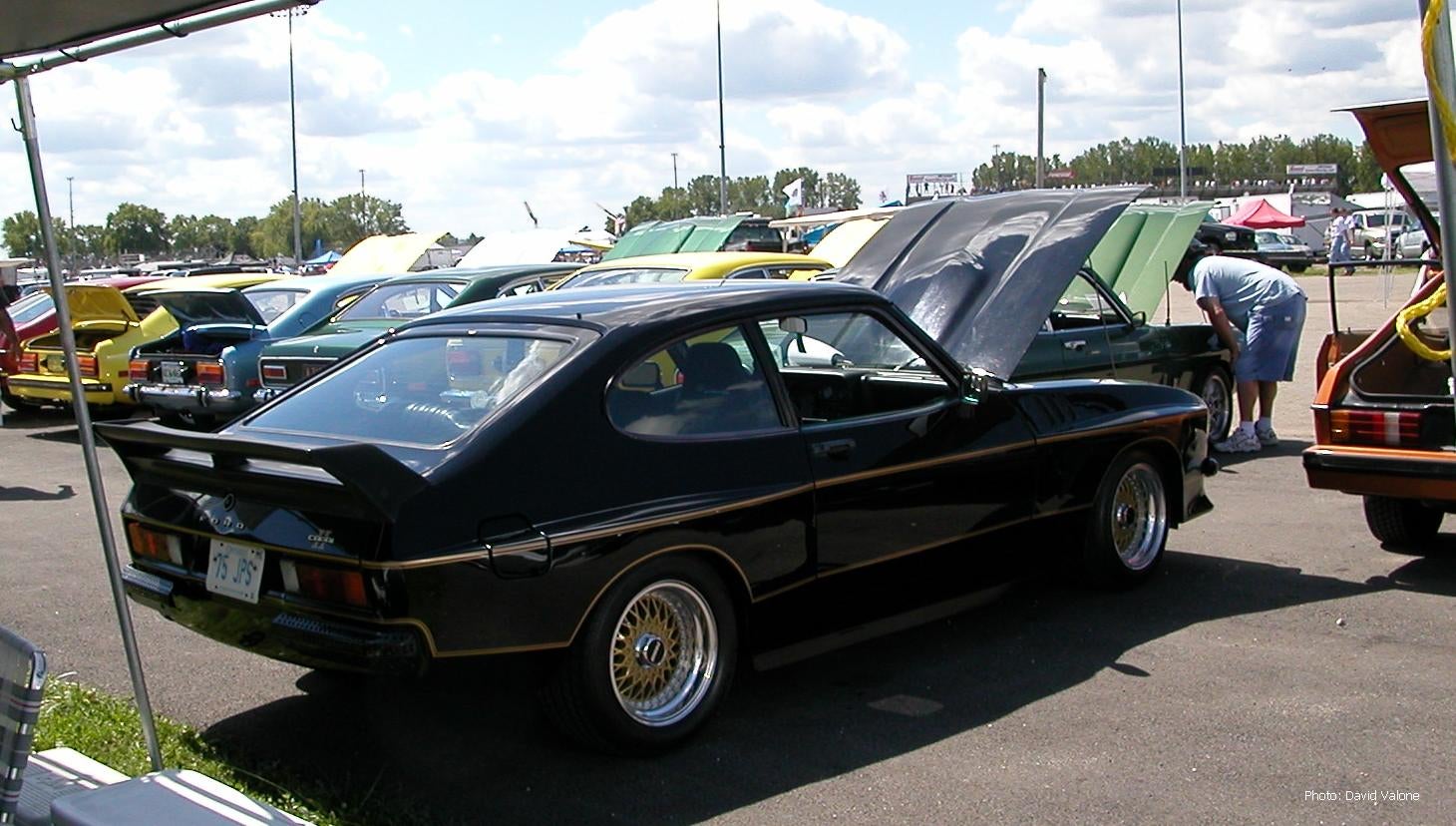
A cage with many points was installed after the original interior was stripped, leaving just the front door panels and dashboard. A center console of aluminium housing a plethora of gauges and switches was fabricated and bolted down next to the aluminium racing seat with its 5 point harness. This picture is pretty much how it sits today, leather wrapped steering wheel, added carpet to keep from boiling the soles of our shoes, and a pair of high back Recaros from a wrecked Porsche. All of the factory gauges and idiot lights still works with the addition of the six extras in the console and the hole where the radio used to live. Everything from boost, differential, transmission, oil and coolant temperature, and volts. The switches control the fuel pumps electric fans, a few empty accessory circuits and the wipers.
The two switches and one button on the bottom row are the ones youíre really interested in however. Key on. The fuel pumps, on, let them run for 5 seconds to pressurize the system. Ignition on. Then, the little black button is the starter that kicks the savage little 2.8 into life.
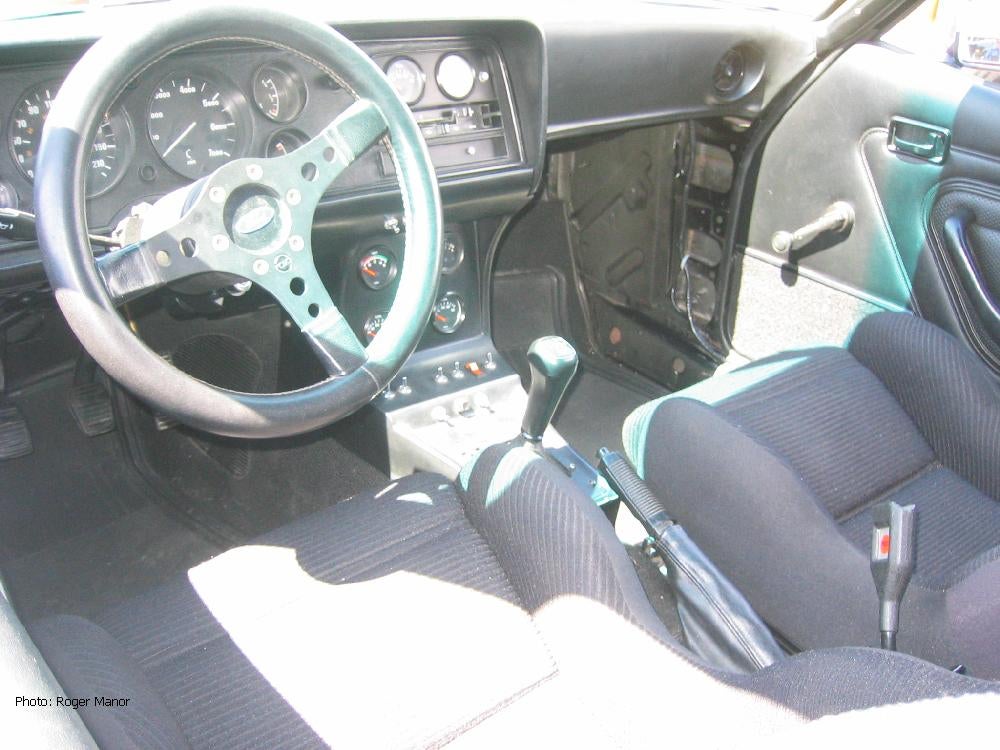
The suspension is a bit more straight forward than you may think. The rear suspension is a live axle, GASP, and its on leaf springs! Calm down, put the pitch forks away. The axle is a Ford 7.5Ē originally packed with 2.88:1 gears and a limited slip, now housing the same LSD but with 3:25:1 gears from more bottom end hooliganism. The rear brakes are still the stock Capri drums. The cart springs were replaced with mono-leaf springs paired with adjustable dampers. A bigger sway bar from a larger Ford product, likely a Taunus or Mk III Cortina, was also fitted. Up front, beefy trailing arms were added to the MacPherson strut suspension which also got some attention in the way of adjustable struts with lowering springs and another big ole sway bar. The ventilated front disc brakes and twin piston calipers also came the unknown Ford donor car. A square tube core support/shock tower brace was added as well.
The wheels originally on the car are actually fairly special too, being 13Ē three piece BBS items coated in gold paint. The way Ford got around the Ford parts only rule was that they had BBS stamp FORD into each wheel center. I havent seen another Capri in person with these wheels but they are out there, but Iím not sure if they also have the Ford stamp. They are wrapped in ancient Pirelli rubber. Yes, it would be nice to use them again, but go and try finding any tire in a 235/60/13, let alone a performance tire.
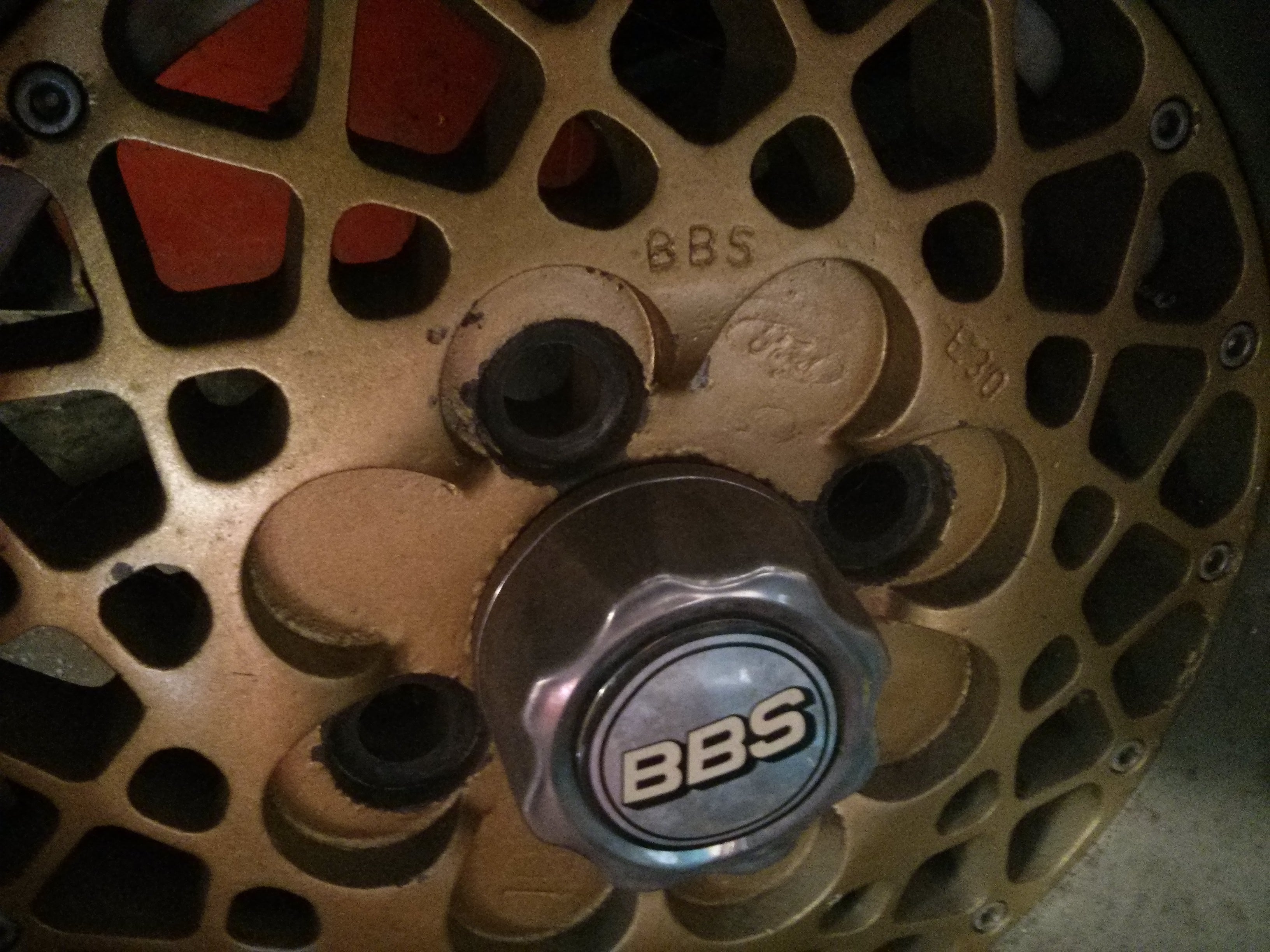
Doesnít it look good with the 13ís? Its currently sporting a set of PRIME 15Ē wheels that mimic the old BBS numbers. This picture is from my fathers house in Germany back in the early 90ís.
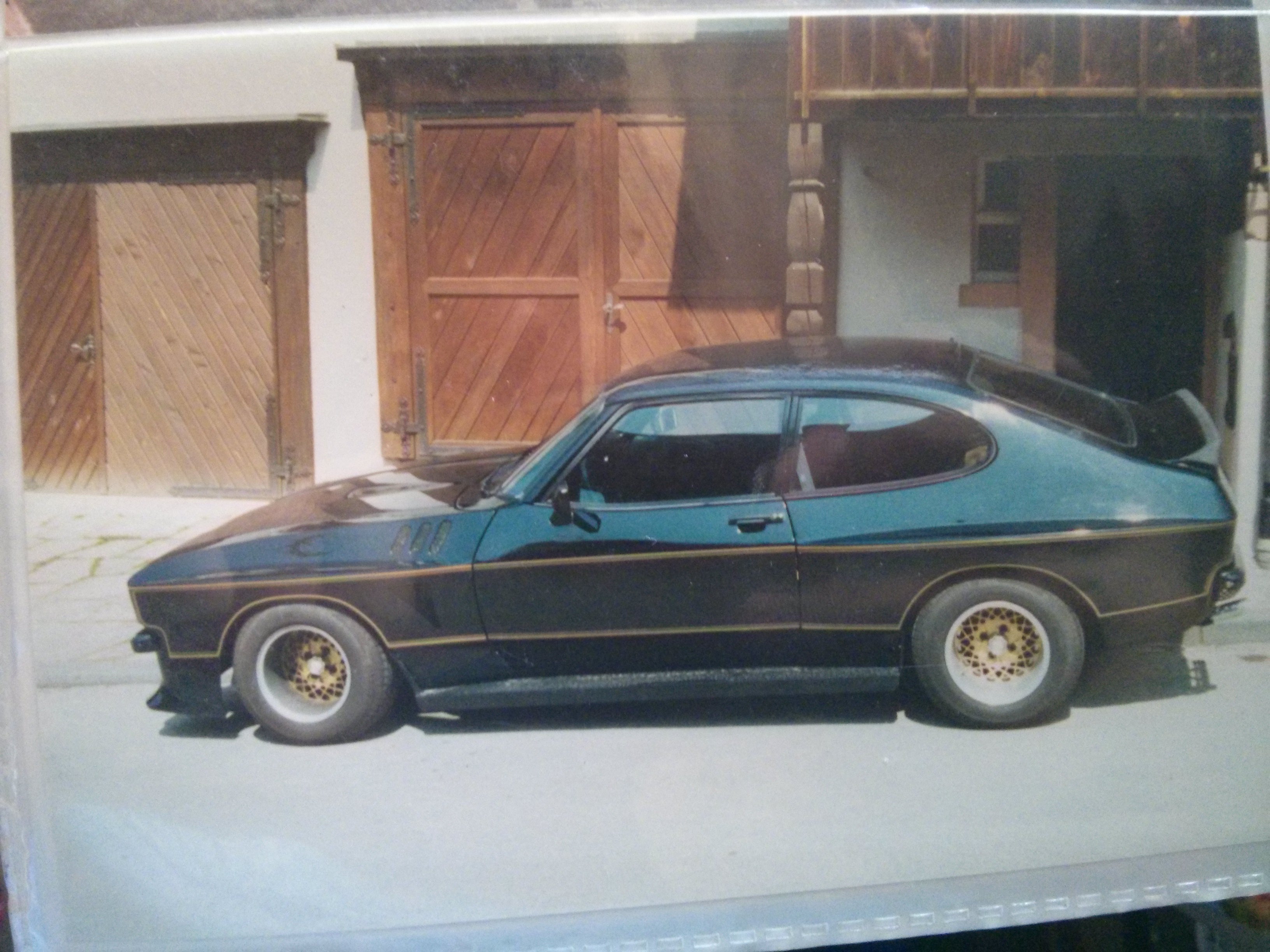
Now, on to the bit you are actually interested in. The engine and drive train.
The car has run the same 2,8 Cologne V6 since day one, but it has evolved over the years. When the car was initially built by Krabb, the 2.8 was treated to a whole slew of lovely little items. A forged crank shaft, new connecting rods, polished for smoother oil delivery apparently, and new higher compression pistons rounded out the short block of this little 60 degree V6. The heads are still the original iron numbers, but heavily ported and polished. Much bigger valves and dual valve springs sat under the factory rocker arms and rails which are covered with these lovely finned aluminium Ford valve covers. A Bosch electronic ignition supplied the spark.
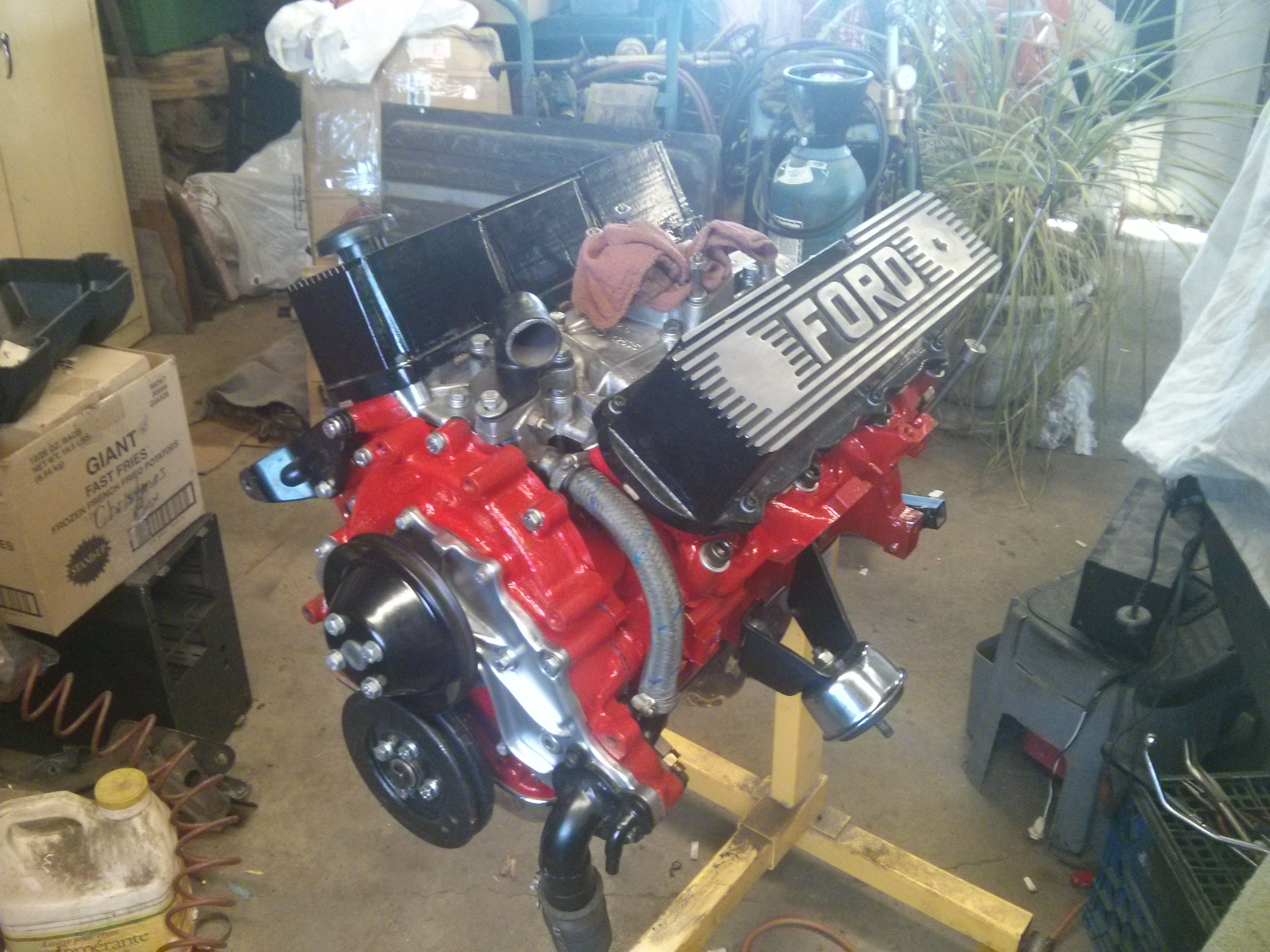
But what about the intake system you ask? The little psycho used to pack a trio of Solex 40-42, apparently sourced from V4 Saabs of all things. No choke and individual runners from each barrel made this damn near un-streetable. A shame really. It must have made a lovely noise. And just look at those hand made air filters!
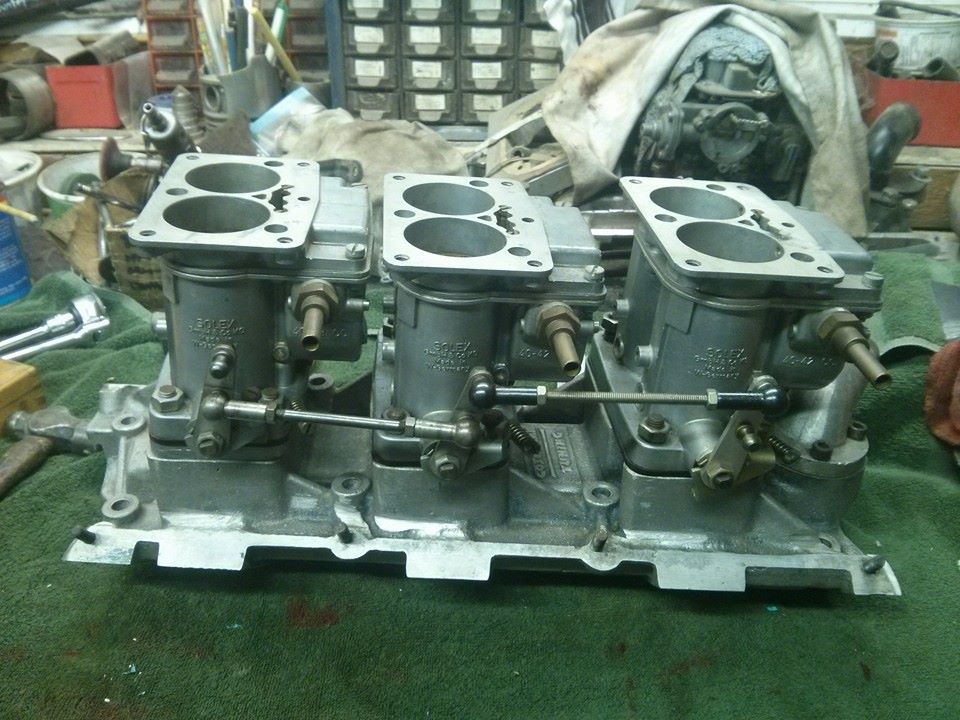
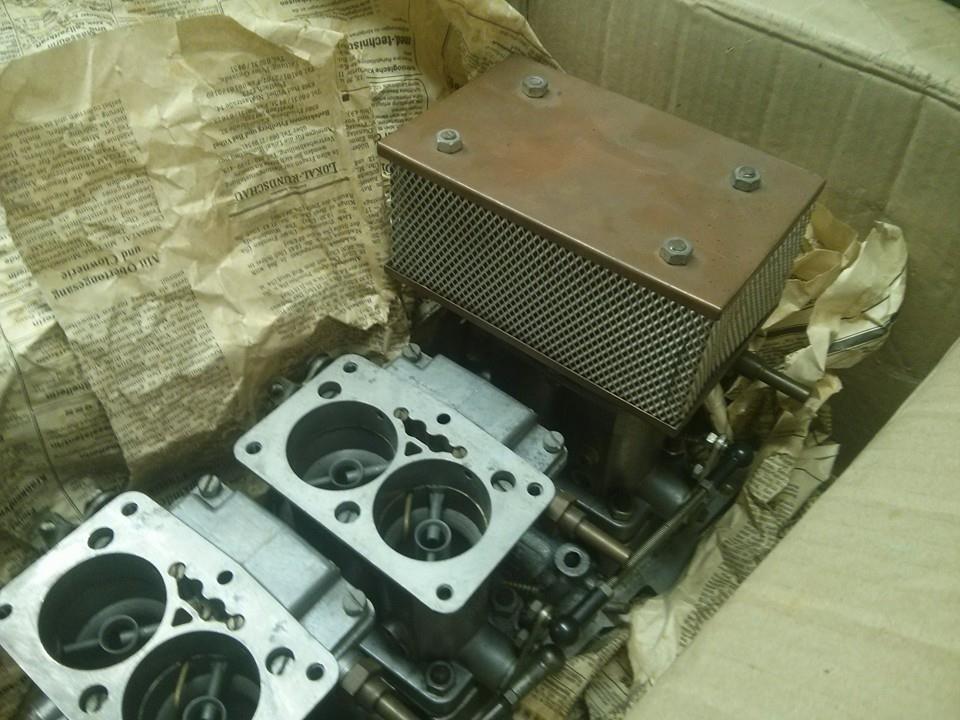
And it looked lovely on the engine with the chrome headers.
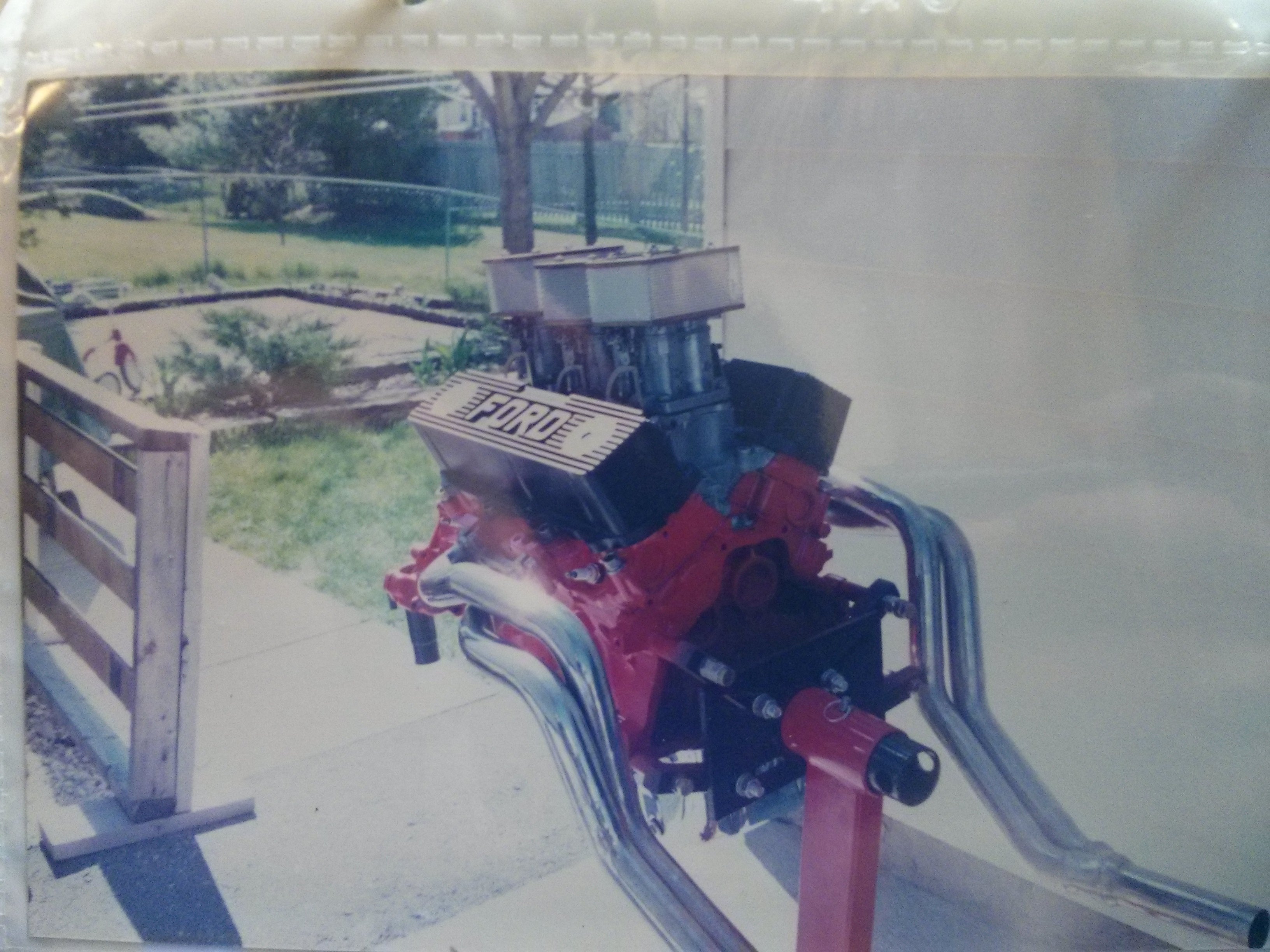
The transmission is less interesting, a 5 speed ZF box, again, likely sourced from a Taunus or something.
What all this boils down to is this; this car is one of 50 built. #46 to be precise. So its a rarer car than most can hope to see. In fact, its one of one in North America according to the Capri Club of North America, but I think you should take that with a grain of salt. But, being built to be a race car, how many have survived? 30? 10? less? No one seems to know. But no matter how rare this car is, it will never be a pampered trailer queen, there will always bee bugs to pick out of the web.
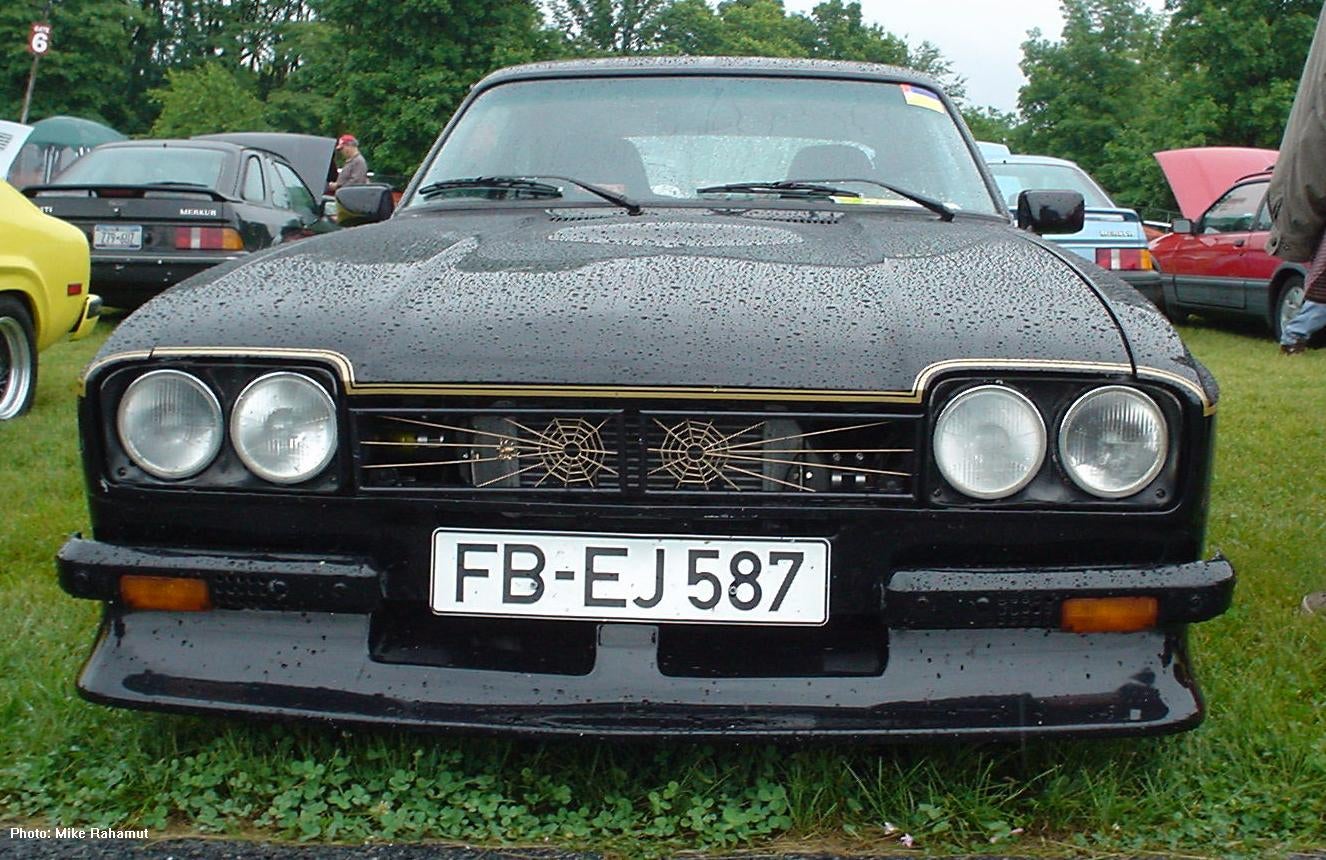
Another chapter of this story will come later, in the form of how my father got the car, but not too much later. Iím looking at you Orlove. NEXT TIME. BOOOOOOOOOOOOST!
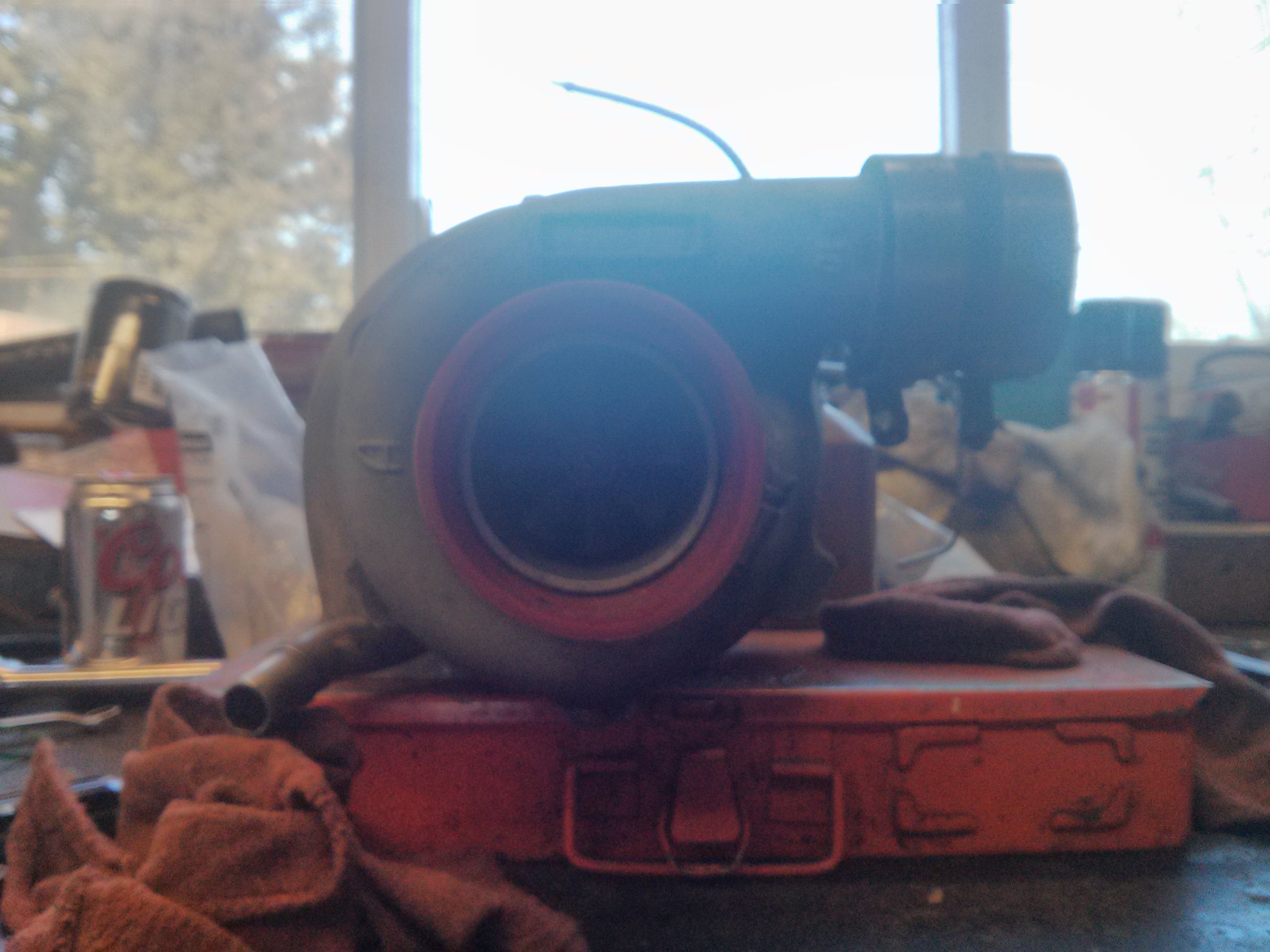
P.S. Ignore the Germany plate on the car, we do live in Canada, but the Ontario plate rubs the paint on the air dam.
 LongbowMkII
> TheVancen- In Pursuit of a Greater Payday and Car Parts
LongbowMkII
> TheVancen- In Pursuit of a Greater Payday and Car Parts
05/09/2015 at 13:30 |
|
are there only 2 exhaust ports per bank?
 TheVancen- In Pursuit of a Greater Payday and Car Parts
> LongbowMkII
TheVancen- In Pursuit of a Greater Payday and Car Parts
> LongbowMkII
05/09/2015 at 13:38 |
|
Yes indeed. Two cylinders in each bank share an exhaust port. This was so that the V6 could easily be retrofitted into a V4 car. The Siamese heads were only usedin the European cars. The Siamese ports make the engine respond poorly to normal tuning, like cams. But they respond extremely well to forced induction.
 LongbowMkII
> TheVancen- In Pursuit of a Greater Payday and Car Parts
LongbowMkII
> TheVancen- In Pursuit of a Greater Payday and Car Parts
05/09/2015 at 13:48 |
|
interesting, I wonder if the TVR tasmin used the Euro V6 or the US one.
 TheVancen- In Pursuit of a Greater Payday and Car Parts
> LongbowMkII
TheVancen- In Pursuit of a Greater Payday and Car Parts
> LongbowMkII
05/09/2015 at 14:02 |
|
Pretty easy to tell if you can find a good picture. The american engine had a big fugly manifold most of the time. And it had separate ports, but right close together. Flowed even worse than the Euro heads though.
 LongbowMkII
> TheVancen- In Pursuit of a Greater Payday and Car Parts
LongbowMkII
> TheVancen- In Pursuit of a Greater Payday and Car Parts
05/09/2015 at 14:09 |
|
http://oppositelock.jalopnik.com/local-monthly-Ö
its near the bottom, looks like a euro V6 to me
 TheVancen- In Pursuit of a Greater Payday and Car Parts
> LongbowMkII
TheVancen- In Pursuit of a Greater Payday and Car Parts
> LongbowMkII
05/09/2015 at 14:21 |
|
I agree. Euro heads with cast manifolds. Makes sense. The cars were built over there I assume.
 LongbowMkII
> TheVancen- In Pursuit of a Greater Payday and Car Parts
LongbowMkII
> TheVancen- In Pursuit of a Greater Payday and Car Parts
05/09/2015 at 14:23 |
|
considering how few they built I would have been surprised if they used 2 different motors.
 TheVancen- In Pursuit of a Greater Payday and Car Parts
> LongbowMkII
TheVancen- In Pursuit of a Greater Payday and Car Parts
> LongbowMkII
05/09/2015 at 14:30 |
|
Knowing TVR.... I could see that.
 Tohru
> TheVancen- In Pursuit of a Greater Payday and Car Parts
Tohru
> TheVancen- In Pursuit of a Greater Payday and Car Parts
05/09/2015 at 15:09 |
|
Tires?
Hoosier Racing Oval Track D.O.T. Street/Dirt P235/60D-13 - $141.95 ea.
Hoosier Sports Car D.O.T. Road Racing Radial P225/50ZR13 - $214.00 ea.
Hoosier Sports Car D.O.T. Road Racing Radial P255/40ZR13 - $236.00 ea.
All of them are DOT legal.
 Ian
> TheVancen- In Pursuit of a Greater Payday and Car Parts
Ian
> TheVancen- In Pursuit of a Greater Payday and Car Parts
05/10/2015 at 16:35 |
|
interested in selling the 13Ē BBS? email me at inopian@hotmail.com if so
Thanks!
Ian
 TheVancen- In Pursuit of a Greater Payday and Car Parts
> Ian
TheVancen- In Pursuit of a Greater Payday and Car Parts
> Ian
05/10/2015 at 18:21 |
|
Afraid not.